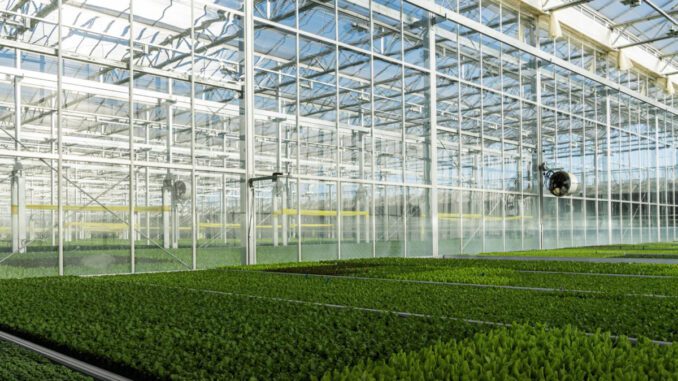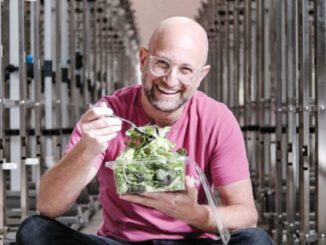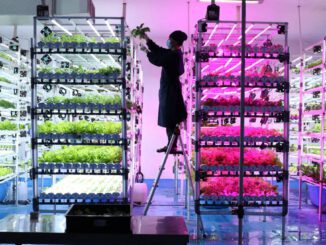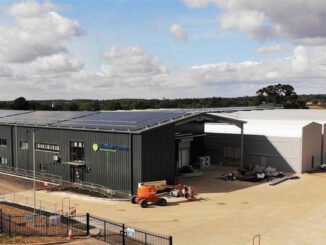
Indoor Farming Specialized Seeds | Melissa Shipman |
One of indoor farming’s strongest wins is in bringing vegetable production much closer to consumers.
Lettuce, for example, is often grown in Arizona or California and shipped approximately 3,000 miles to the East Coast.
“Since more than 98% of domestically grown leafy greens come from California and Arizona, by the time it reaches other markets, it has lost quality, taste, nutritional value, and shelf life,” says Viraj Puri, co-founder and CEO of Gotham Greens.
Decentralized production helps provide consistency of pricing and reduces carbon emissions from transportation across the country, but it also reduces food waste.
“We’ve all had the package of lettuce or strawberries in the back of the fridge that goes bad in what seems like just a few days. If we don’t have to ship those items for 10 days after harvesting, that’s more time consumers have to eat them at peak ripeness,” said David Nothmann, chief operating officer of Unfold.
Specialized Seeds
All those benefits start with the right seed.
“We’re building a predictive breeding platform that utilizes accelerated artificial intelligence and data analytics to help us produce new genetics for an indoor farming customer in a faster manner,” Nothmann says.
Unfold is currently focused on lettuce, spinach, tomato, pepper and cucumber, but plans for expanding to other crops are in the works as well. Yield is a requirement, but breeding can be differentiated by focusing on consumer-focused traits.
“There are only a certain number of traits we can focus on for a particular seed varietal. So, for example, in a controlled environment, we don’t need to use one of those trait slots on wind tolerance, which means we can now think more about crunch or flavor or color,” Nothmann says.
This helps indoor growers stand out, and in turn, earn a premium place in the market.
“We can concentrate on phytochemicals and create those designer plants with special colors or specific nutrient values. We’re going to see that more and more from these indoor farms,” Stein says.
In the summer of 2022, Seedway LLC, partnered with Sakata Seed America to form a new Controlled Environment Agriculture department. Frank Pennington, northern vegetable seed sales manager for Seedway, demand for indoor-specific seed will continue to grow.
“Seedway’s goal is to be able to provide the needed species and varieties that will perform well for our growers and help to make them profitable for many years to come,” Pennington says.
CEA sales representative and trial coordinator Evelyn Zaleski is working on developing a trialing plan for growers while working with seed suppliers to introduce new products in several different species including lettuce, greens, tomatoes, peppers and most-recently, cucumbers.
As this is still an emerging industry in the U.S., Pennington says many growers are working to understand the need for developing new varieties.
“The technology and products are being developed by seed suppliers currently to make sure that grower needs are being taken care of for the future. The growers are moving forward with new technology and the ability to control many steps of the growing process on these crops in these facilities,” Pennington says.
Read the Entire Original Article Here: https://seedworld.com/indoor-farming-provides-a-solution-to-global-hunger/



